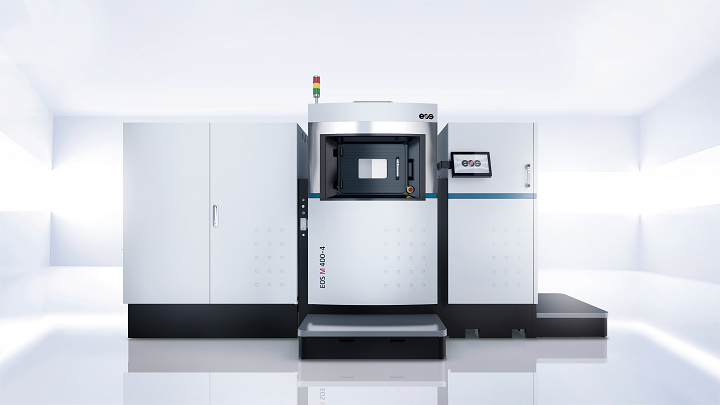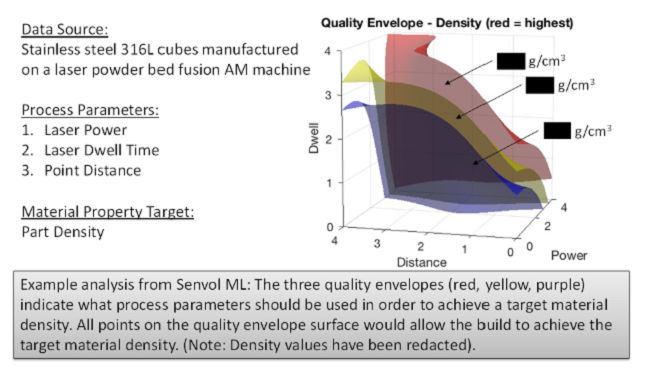Over the last few years, Senvol, which provides data to help companies implement additive manufacturing into their workflows, has put a good deal of focus into military applications. Back in 2017, the US Air Force licensed the Senvol Database for integration into the enterprise software platform for Materials Research for the Air Force Research Laboratory (AFRL). Now, its data-driven machine learning software suite for AM, Senvol ML, will be used to help with a collaborative USAF program between the AFRL and the Air Force Life Cycle Management Center (AFLCMC), both located at Wright-Patterson Air Force Base east of Dayton, Ohio.
The University of Dayton Research Institute (UDRI), a national leader in scientific and engineering research, is the main contractor on the program, which is working to create methodology that will demonstrate airworthiness of multi-laser AM systems.
“AM has recently demonstrated the ability to rapidly deliver complex geometries and production quality parts that are able to enhance the capabilities of DoD weapons systems,” said Jessica Orr, the Program Manager and Materials Engineering Team Leader for AM & Repair Technologies at UDRI. “A major challenge facing the use of AM for producing DoD relevant end-use parts is that the number of available large scale printers is likely to be limited for the next 5-10 years. In this collaborative program we are developing and demonstrating methodology to use a new multi-laser AM printer to produce airworthy, end-use parts.”
The Senvol ML suite helps companies characterize, or qualify, AM materials and processes. This program is titled “FlexSpecs,” and will work to qualify the EOS M400-4, a four laser powder bed fusion (LPBF) 3D printing system.
“We’re thrilled to work with UDRI, AFRL, and AFLCMC on this program. Our machine learning software, Senvol ML, is well-suited to assist with AM qualification, and this is a great example of that,” stated Senvol President Annie Wang. “In addition to helping to develop baseline mechanical properties and design allowables, the software will analyze data to evaluate laser-to-laser consistency, optimize bulk scan settings, identify preferred overlap patterns and parameters, and confirm uniformity over the entire build plate.”
The collaborative partners will use Senvol ML software to help set up the characterization plan and process optimization for the FlexSpecs program, and also to analyze all of the project data.
The AFRL is in charge of discovery, development, and integration of affordable war-fighting technologies for the US air, space, and cyberspace forces, while the AFLCMC, one of six centers reporting to the Air Force Materiel Command, offers life cycle management and sustainment of all the weapon systems, from start to finish, of the USAF. Together with UDRI, these organizations will work to qualify the EOS M400-4 printer, creating design allowables and baseline mechanical properties, in addition to completing demonstration builds of heat exchangers and parts that are relevant to hypersonics.
“The overall objective of this program is to successfully demonstrate full scale M400, multi-laser prints of heat exchangers as well as hypersonics-relevant parts,” explained Dr. Mark Benedict, Materials Scientist and Program Manager in the Propulsion, Structures & Industrial Technologies Branch, Manufacturing Technology Division, Materials and Manufacturing Directorate, AFRL, Air Force Materiel Command. “This is an area of need for the Air Force, and we look forward to the results.”
According to Under Secretary of Defense for Research and Engineering Michael Griffin, the hypersonic market is the main development priority for the Pentagon, and is predicted to have sales of over $5 billion by the mid-2020s. So if additive manufacturing can be used to make qualified parts for this application, that’s excellent news for the Air Force.
Discuss this story and other 3D printing topics at 3DPrintBoard.com or share your thoughts in the Facebook comments below.
Subscribe to Our Email Newsletter
Stay up-to-date on all the latest news from the 3D printing industry and receive information and offers from third party vendors.
Print Services
Upload your 3D Models and get them printed quickly and efficiently.
You May Also Like
South Korean 3D Printing Industry Sounds Alarm Over Data Leakage
An article recently published in BusinessKorea has highlighted that small and medium-sized enterprises (SMEs) utilizing additive manufacturing (AM) in South Korea are increasingly worried about the threat of leaking intellectual...
MetalWorm Sells WAAM Systems to Research Institutes in Brazil and Malaysia
Turkish WAAM firm MetalWorm has sold a system in Malaysia and another in Brazil. This is an excellent example of a few emerging trends in additive. Firstly, WAAM was experimented...
From Rapid Qualification to On-ship 3D Printing, ABS Sets New Standards in Maritime AM
The American Bureau of Shipping (ABS) is taking significant strides in advancing additive manufacturing (AM) within the maritime sector. Amidst increasing interest and the need for modernization, ABS has been...
HAMR Industries Gets a FormAlloy X5R at Neighborhood 91
The Neighborhood 91 (N91) cluster of additive manufacturing firms in Pennsylvania has acquired a FormAlloy robot arm X5R Directed Energy Deposition (DED) system; specifically HAMR Industries. The X5R can work...



































